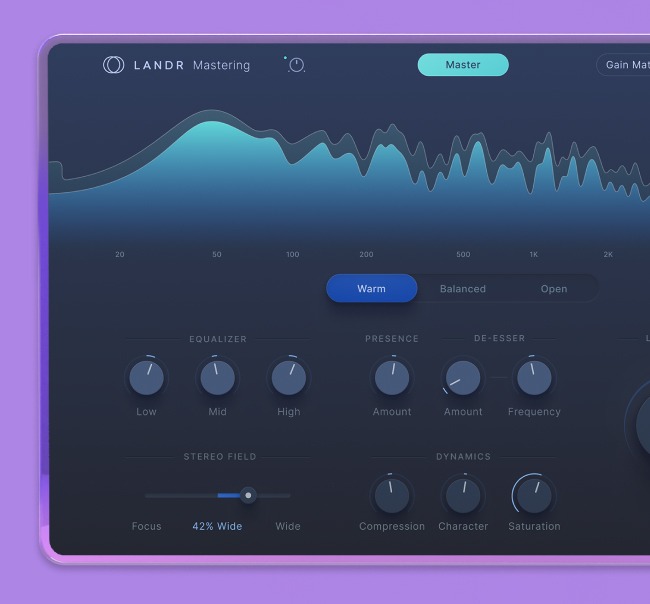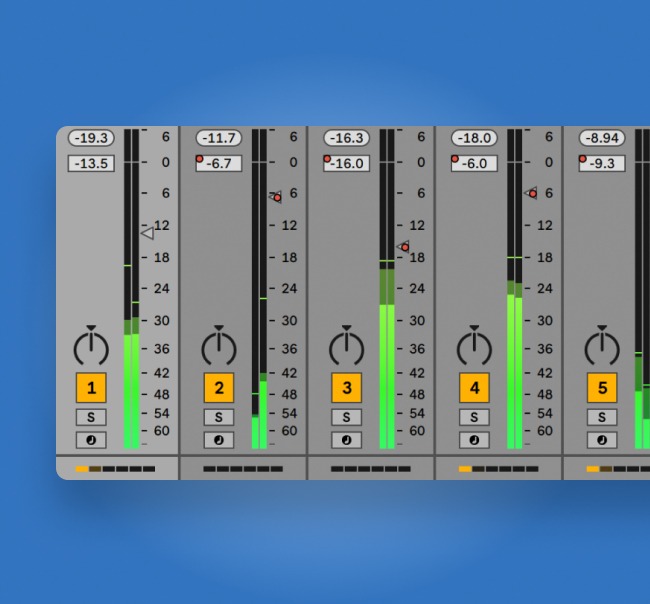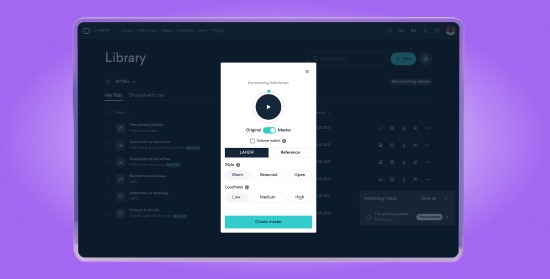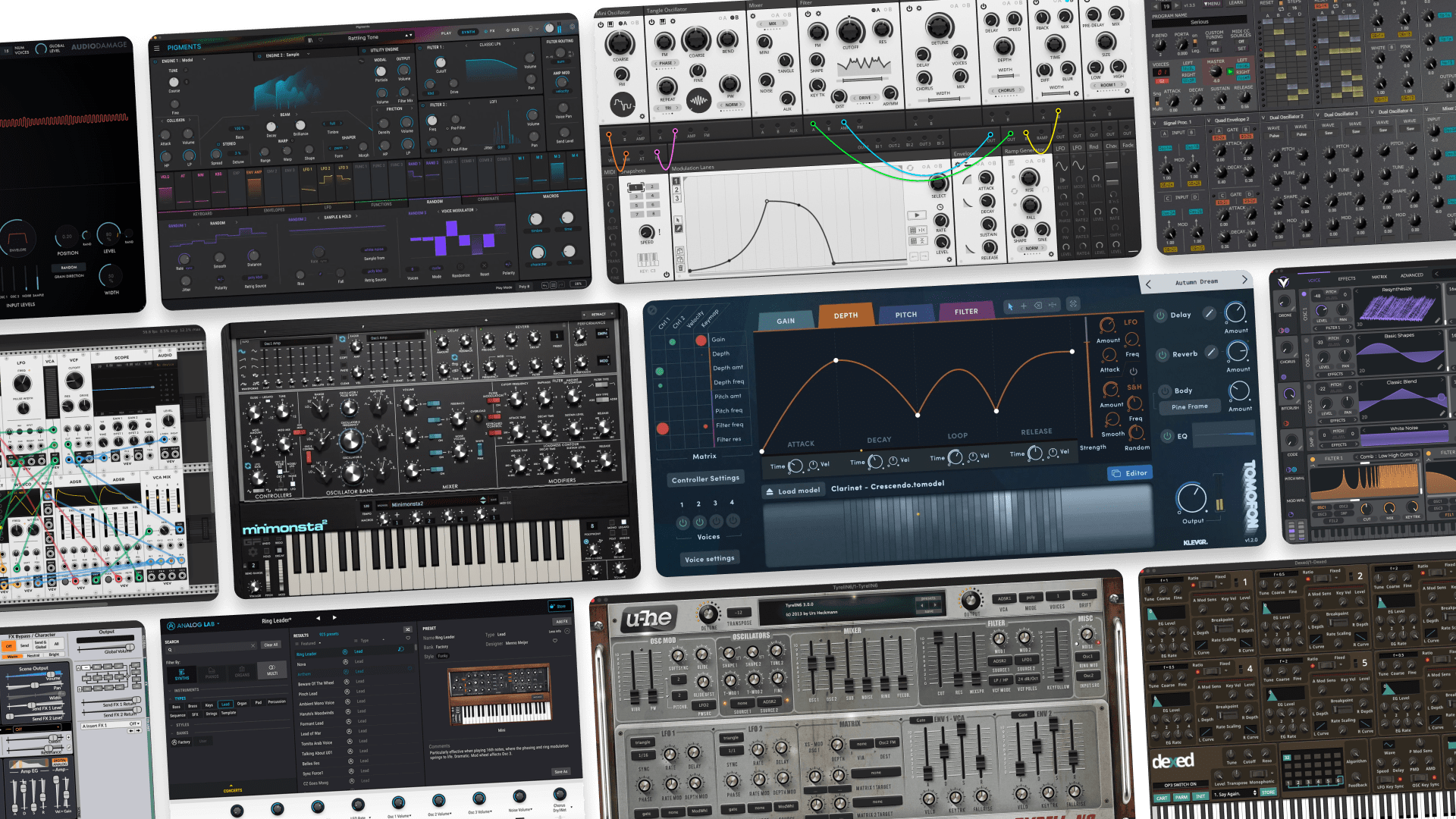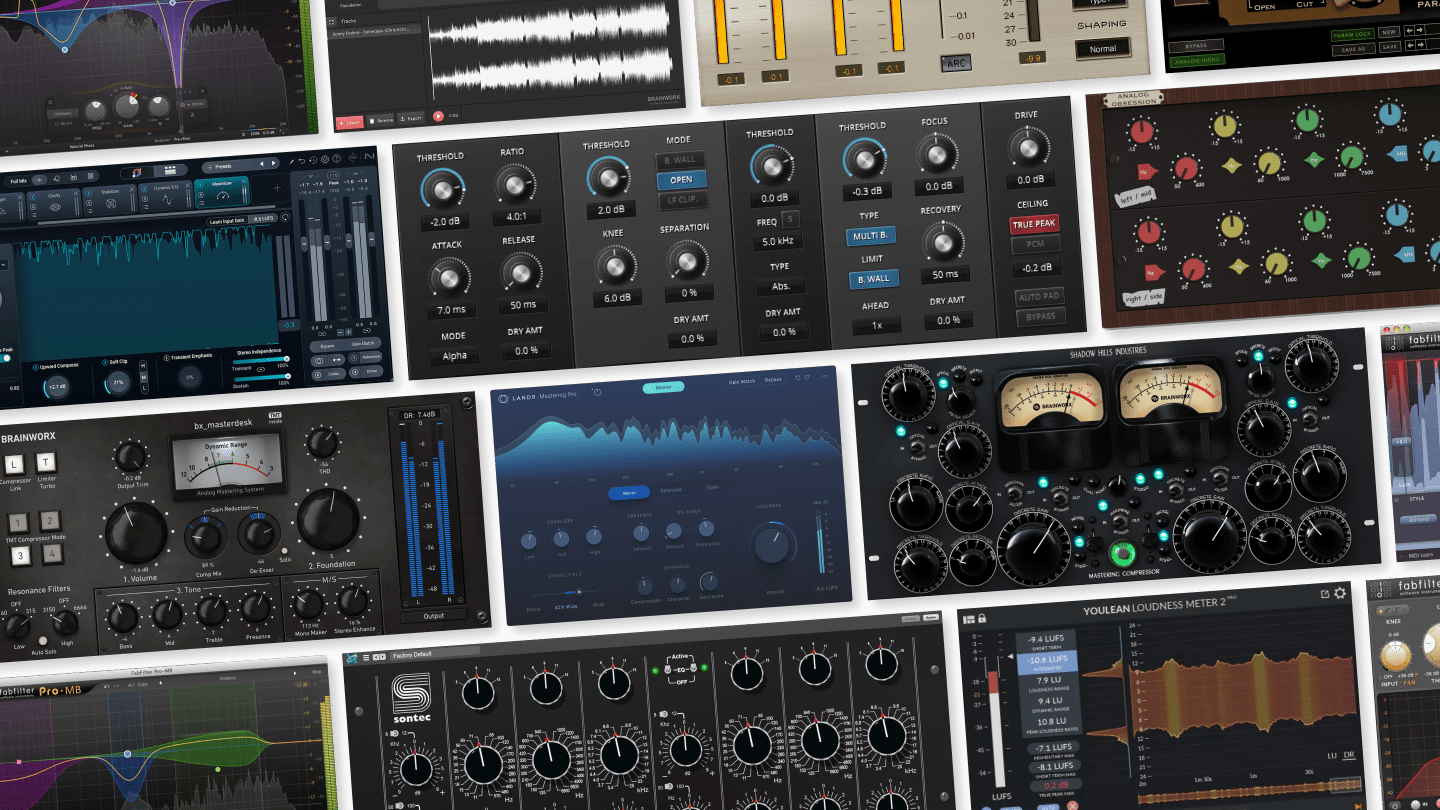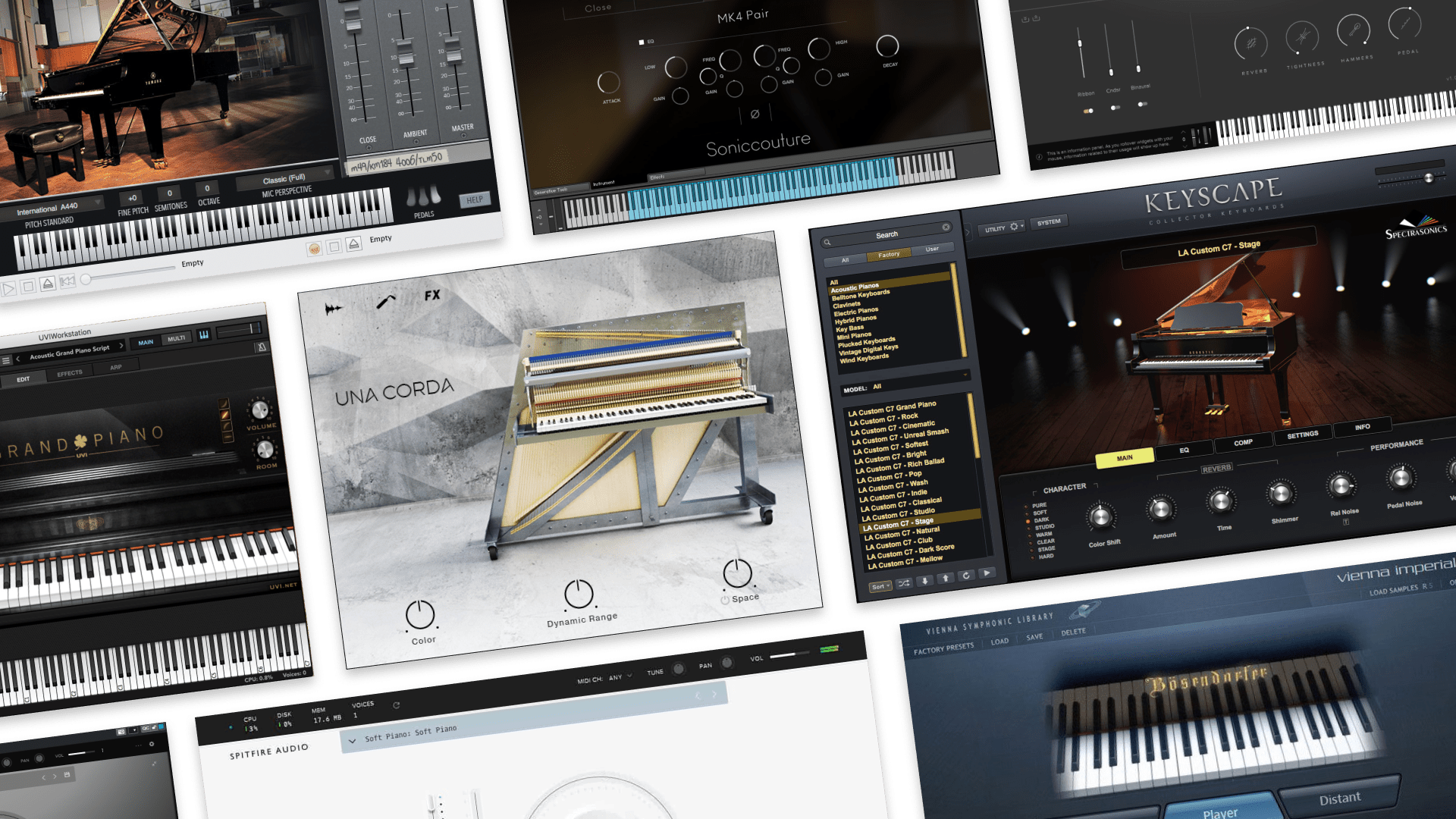
How to Create Headroom: 7 Tips That Will Save Your Mixes
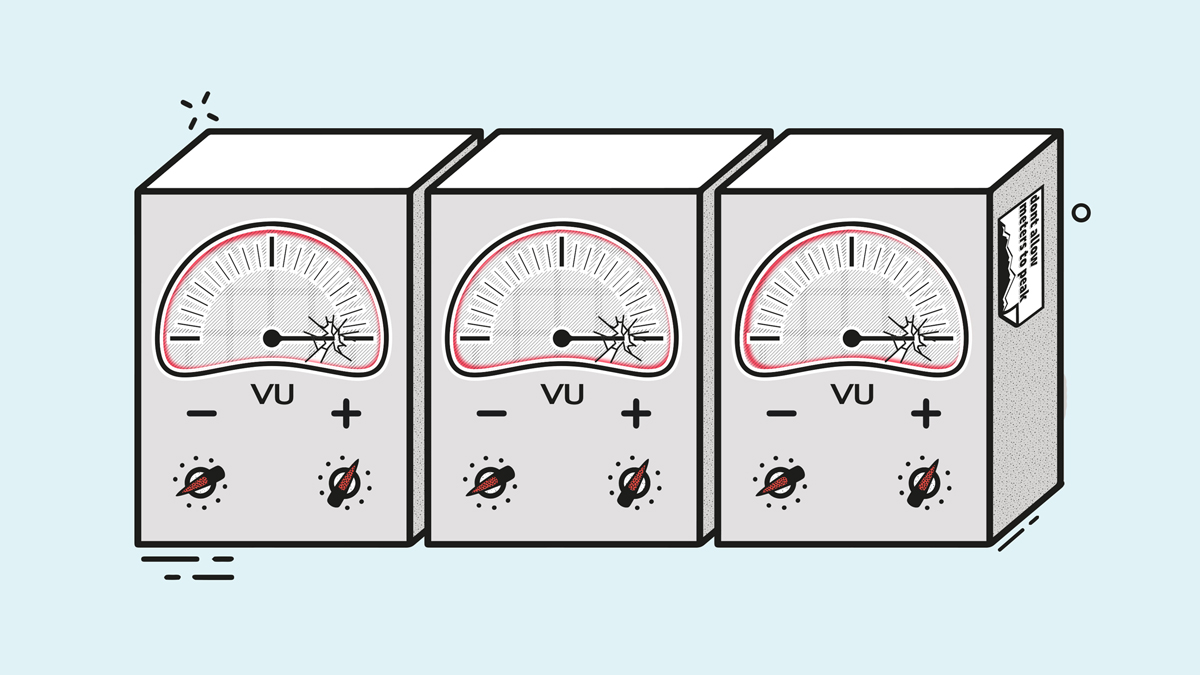
The most common problem we see at LANDR is a lack of headroom.
Ask any mastering engineer and they’ll say the same thing: If a mix comes in without headroom, there’s less room left for improvement.
Everyone knows you need a good mix and good master for your music to standout these days.
Keeping headroom in mind throughout your process is the best way to achieve the right mix and get the best master.
The two crucial qualities of a great mix are dynamics and headroom. A dynamic mix has lots of variation between the loud and quiet parts. The energy changes over time and keeps the mix interesting.
Making sure you optimize your headroom at every stage of your mix is the best way to avoid compromising those all-important dynamics.
Here’s how it works. And more importantly, Here’s how to do it right.
What Is Headroom?
Headroom is the available space in dB (decibels) between your loudest peak level (transients) and 0 dBFS (decibels full scale).
It’s a buffer you leave unused. Think of headroom as your ‘safety zone’.
Remember! Headroom is the space between your highest peaks (transients) and 0 dB, and NOT between the average level (RMS) of your track and 0 dB (that will still clip). Many people get this confused!
Leaving headroom is crucial. It helps you:
- Prevent your mix from clipping and distorting.
- Leaves mastering the space to work its magic.
[adbutler zone_id=”291816″ secure=”1″ type=”asyncjs”]
It’s also the best way to avoid getting this message in LANDR:
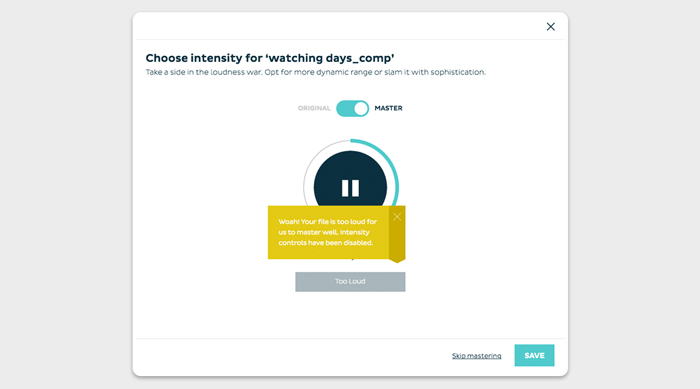
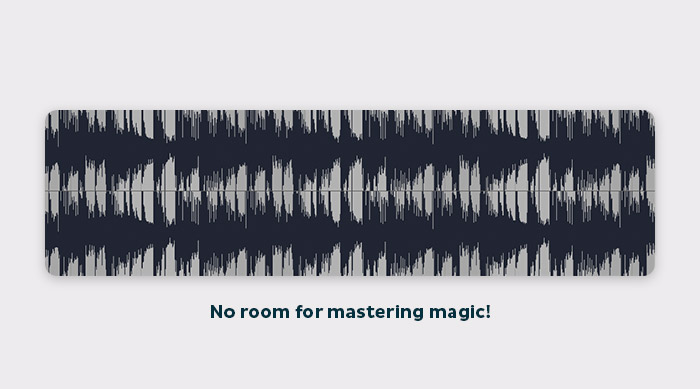
Here’s an example of a track without headroom. The transient peaks are clipping!
What Went Wrong?
Mixes usually lack headroom because:
- It was mixed hot (you’re cranking the level too close to 0 dB on your meter)
- Plugins were used on the master bus for the sake of loudness (usually a limiter and/or compressor)
These kinds of levels leave no room for mastering. The output of a track at this volume will cause clipping and distortion.
If you’re looking for loudness – LANDR has got you covered. No need to add plugins on your master bus for the sake of loudness.
Here’s an example of how LANDR Mastering makes a track louder.
Try LANDR Mastering on Your Own Tracks
That being said, if you like using a particular limiter, compressor, EQ or other plugin on your master output, for it’s colouring or glueing effects for example—go for it! Just keep that headroom in mind.
Here’s 7 Tips to Help You Achieve Headroom in Your Mix
- Focus on the dominant feature of your mix first
- Use Your Eyes AND Ears
- Think before you automate
- Louder Doesn’t Always Equal Better
- Work in 24 Bit
- Control your dynamics
- Don’t cheat
1. Focus on the dominant feature of your mix first
Decide ahead of time which elements of your mix will be front and center in terms of presence. Then integrate the other tracks underneath.
Try looping the loudest section and mix it first (often the choruses). Then move to the less intense sections (verses) and finally the lowest (intros, outros).
2. Use Your Eyes AND Ears
Keep an eye on your master fader. The clipping point in a DAW is 0 (zero) dBFS. It’s best to keep your peaks a few dB below 0 dBFS. Aim for around -6 dBFS – it’s nice and safe.
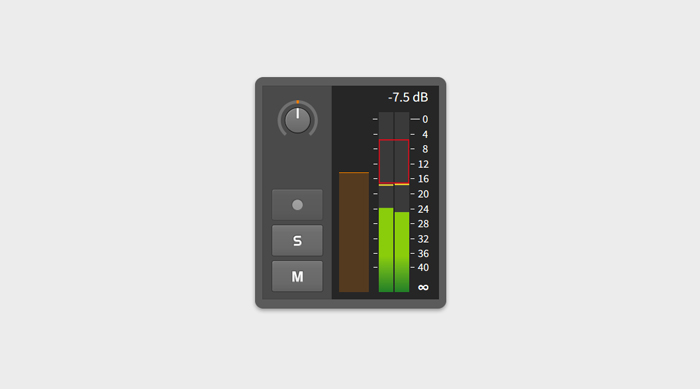
Here’s a snapshot in time of a master channel with great headroom.
To achieve good headroom, watch for two things:
- The average level (RMS) on your master meter should look like the one above.
- Throughout your track, nothing (including transients) should go past -6 dBFS
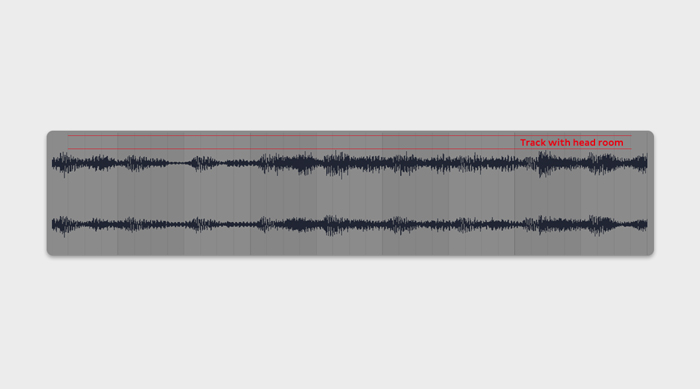
Above is a healthy, good looking wave shape: We call this the ‘fishbone’—the opposite of the ‘sausage’ (a straight block). The transients and dynamics are preserved.
Some production styles (types of electronic music production for example) can involve sound sources and compression techniques that lead to more block-like waveforms, which is totally cool. As long as everything you do is for the feel of your mix—NOT the overall loudness.
NOT SO FAST: Some of you cheat your way to a -6 dBFS. If your soundwave looks like a sausage, NEVER bring it down using a limiter or by normalizing. You might think you created headroom because your peak level is at -6dBFS, but it’s compressed. That’s cheating and it won’t sound good in the end.
3. Think before you automate
A classic way to automate is known as ‘riding your faders’ – often used for vocals and other instruments to get smooth and controlled levels throughout the song.
Automating volume and effects is a flexible and powerful tool. But jumping into it too early in the mix process can paint you into a corner if you’re not careful (i.e. you could eat up all your headroom early on).
Start by adjusting your individual fader levels to get a nice overall balance. Then use automation as a tool to make things balanced later on.
4. Louder Doesn’t Always Equal Better
Everyone does it: we get excited because loud sounds good, so we crank up faders unnecessarily. However, ultimate loudness shouldn’t be your focus in mixing.
“But I LIKE IT LOUD!!!”. No sweat – just turn up the level of your monitors or headphones until it feels right. ;)
Be careful not to blast your ears for extended periods of time. Mixing at loud levels can misrepresent how your mix really sounds. Feel free to crank it up now and then, however, it’s generally recommended to mix at more conservative levels. Aim for a level where you can have a casual conversation with a friend without having to shout over your mix.
5. Work in 24 Bit
When digital audio began to take over from analog a lot of the practices engineers were used to got carried over. Including the idea that you had to record as loud as cleanly possible to keep your signal above the noise floor.
This was definitely a concern when recording to tape. Even a bunch of tracks in 16-bit digital can start to gather an audible noise floor.
But 24-bit solves all of that. The noise floor is so low in 24-bit that you can give yourself a lot of room (15-20 dB) between your peaks and 0 dBFS without worrying about noise or loss of resolution.
6. Control your dynamics
Always manage your transient-heavy elements in your mix. Dynamics are good, but apply some gentle, effective compression to keep them under control. It will help avoid hard limiting effects of the mastering process when mastering at HIGH intensity.
Add small amounts of compression at different stages in the mixing process, rather than adding a lot at the end.
7. Don’t cheat
Have headroom in mind when you start your mix and keep your tracks at safe levels. If you’re finding yourself trying to recover headroom at the end, fine tune your individual track levels rather than reaching for your master fader and pulling it down.
Don’t cheat your way to -6 dBFS. If you’ve used plugins for the sake of loudness and your waveform is big, block-like and peaking at or near 0 dBFS – don’t take a shortcut by dragging your master fader down. You might think you created headroom because your peak level is now lower, but you’ve only squished your mix. For headroom to be beneficial to your mix, it needs to be arrived at in the right way.
Aim For A Dynamic Mix With Room To Breathe
The key to a great mix is to start with a dynamic production—one that has variations in energy throughout.
Resist the urge to destroy headroom by cranking up the faders—or worse, slapping a compressor or limiter on the master bus for the sake of loudness.
It may take a few tries to make headroom a part of your workflow. But I guarantee your mixes will have a far better feel. Sending a mix with good headroom for mastering will elevate your mix to a mastered-piece!
So stay cool, keep your levels a safe distance from 0 dBFS, and let that mix breathe.
Gear guides, tips, tutorials, inspiration and more—delivered weekly.
Keep up with the LANDR Blog.
